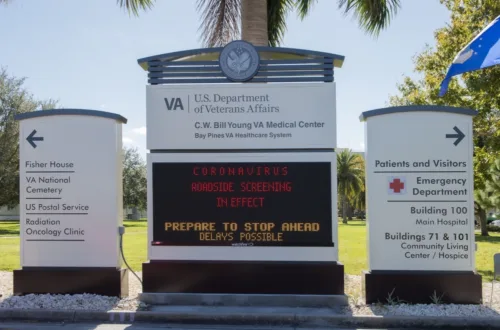New Army Suicide Prevention Plan Criticized For Lack Of Guidance

Update: September 5 2023 The United States Army updated its suicide prevention policy on 1 September 2023 to include congressionally-mandated mental health rules permitting soldiers to request mental health care for any reason. This means the Army is finally in compliance with the Brandon Act of 2021. What follows is preserved here for archival purposes.
In August of 2023, after three years of grappling with creating and maintaining an anti-suicide program, the United States Army finally issued a suicide prevention policy scheduled to go into effect on September 8, 2023. But that policy is not without shortcomings or controversy.
U.S. Army Suicide Prevention Policy 3 Years Overdue
A number of issues, including a push to fully standardize certain types of policy (including suicide prevention) across all branches of military service, have contributed to the delay in the new Army suicide policy.
But the blame for the three-year delay cannot be fully laid at the feet of that standardization effort. What is taking the United States Army so long to codify rules for dealing with an ongoing suicide crisis in the ranks?
The new Army approach mentioned above has been criticized for having “no clear guidance for how service members are supposed to take action if someone in their ranks has declining mental health or suicidal ideation,” according to Military.com. And that comes despite earlier promises to the contrary.
Three Army Suicides At A Single Army Base In A Single Month
In August of 2023, three United States Army soldiers committed suicide at the same military base, Fort Cavazos, in Texas. As bad as that news is, Military.com reports an even more alarming statistic associated with service in the United States Army.
“At least two soldiers have died by suicide every week this year on average in the part-time components and on active duty at bases across the service, according to internal documents reviewed by Military.com.”
Details like these have family members, military leaders, and lawmakers rightfully feeling there is something deeply troubling about the system. But who can fix it?
Suicide Prevention in the Military is Complicated
While criticism of overdue and inadequate military policy may be fully justified, it is crucial to acknowledge that suicide prevention is complex, and there’s no one-size-fits-all approach to the problem. The Army has a tough road to navigate in this area.
Some aim their criticism at the Army for not turning the suicide prevention policy issue over to subject matter experts on mental health rather than relying on military leaders without mental health training, experience, or context to ask questions of those experts and then make their own decisions based on consulting those professionals.
The argument here is that even with a panel of experts weighing in, the people ultimately responsible for creating the policies have no professional qualifications in the mental health field.
At least, that is the perception among some. If that perception is reality, would requiring mental health policy to come from mental health professionals be the long-term answer to the Army suicide problem?
The U.S. Army Suicide Problem
Military.com reported some 255 soldiers died by suicide in 2022. The Army’s approach to decision-making about suicide prevention, interventions, mental health counseling, or time off seems to be left to mid-level managers who have no clinical training or context in suicide prevention save for some guidelines about warning signs and potential risks. Some have criticized that approach as unsustainable.
An Army suicide at Fort Riley in Kansas is an excellent example of how the current system can–and did–fail soldiers in a mental health crisis.
Military.com reports a Fort Riley soldier was interrupted during a suicide attempt while deployed overseas. The soldier’s unit returned him to Fort Riley, but he was not given inpatient care. Nor did the Army take “meaningful actions” to keep their soldier from self-harm or prevent him from being left on his own.
The soldier later died by suicide.
The Future
In an era where military recruiting overall is down, and the Army falls short of its recruiting goals for the year by a whopping 10 thousand troops, the service cannot afford any more half-efforts in this area.
The message the general public gets when military suicide stories make the headlines seems clear. To date, the Army and Defense Department efforts are simply not up to the task.
That’s partly due to suicide being such a complex issue, but the DoD should not be surprised if the general public displays a greater lack of confidence in the DoD. There is a perception that a soldier’s most urgent needs are not being properly and professionally addressed where mental health in the ranks is concerned. Why should someone’s son or daughter be encouraged to sign on the dotted line under such conditions?
The Last Word?
While the leadership of the United States Army dragged its feet in working a comprehensive, Brandon Act-compliant suicide prevention policy, nearly 50 service members died by suicide in the first three months of 2023.
In the first quarter of 2022, 37 service members took their lives. Those responsible for recruiting tomorrow’s soldiers have to face those statistics as well as potential questions from their new recruits and their families about this issue, what took the Army so long to deal with it, and whether new recruits are actually protected under the new policy.
Army officials who struggle to comprehend the military’s recruiting woes need look no further than Army history with this particular issue to learn why some might think twice about signing on the dotted line.
Related:
- VA Urges Veterans to Get Updated COVID Booster Shots
- Manage Your VA Education Benefits Online
- Lawmakers: Military Housing Needs Reform
About the author
Editor-in-Chief Joe Wallace is a 13-year veteran of the United States Air Force and a former reporter/editor for Air Force Television News and the Pentagon Channel. His freelance work includes contract work for Motorola, VALoans.com, and Credit Karma. He is co-founder of Dim Art House in Springfield, Illinois, and spends his non-writing time as an abstract painter, independent publisher, and occasional filmmaker.


